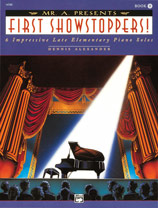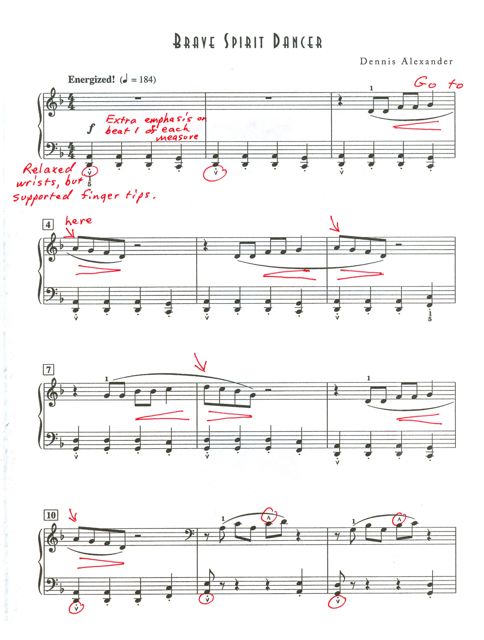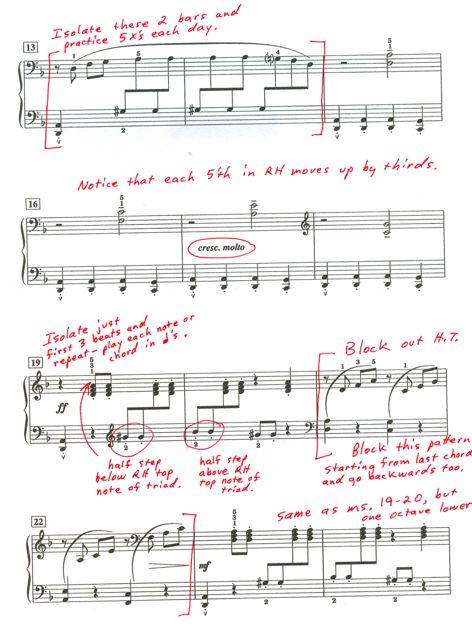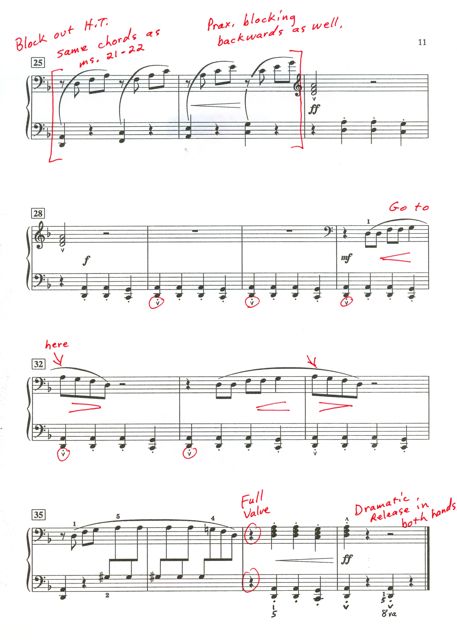Mr. A Presents "First Showstoppers"

Every student likes to perform something that is sure to impress an audience. It doesn't necessarily have to be loud and fast; humor, unusual rhythms, wide ranges and unexpected sounds can also be highly successful with students and audiences alike! This collection of six entertaining and impressive-sounding late elementary solos has all of the above. "Brave Spirit Dancer" is one of those "sure to please" pupil savers that will be lots of fun to practice and perform. It contains energetic sounds, infectious rhythms, and numerous repeated "patterns" that make this solo easy to learn and quick to memorize.

This is a good piece for helping to develop that arch in the LH with all the repeated open 5ths. Be sure to emphasize the importance of maintaining loose, relaxed wrists but firm and supported finger joints. Practice the LH very slowly and exaggerate this relaxed, elastic wrist motion and give a slight accent to beat "one" of each measure. Ask the student to play the opening RH pattern and shape this melody, always going to the top note of ms. 4. This is the "heart" of the phrase, and this pattern is repeated 4 times on the first page. I have indicated crescendo and decrescendo markings to help highlight this phrase shaping. In ms. 11-12, give beat 3 a slight accent in the RH to help maintain the energy and strong rhythmic nature of this piece.(Click on score to enlarge)

Measures 13-14 are great fun to play, and will probably be your student's favorite 2 measures! Ask your student to practice this pattern by playing only to beat 3 of ms. 13 and stopping. (COUNT OUT LOUD AS YOU PLAY) Do this 5 times in a row, getting more and more comfortable with the LH crossing over the RH. Then add beats 3 and 4 and stop on beat 1 of ms. 14. Now do this grouping 5 times in a row. Now start with ms. 14 and play to beat 1 of ms. 15 and repeat 5 times in a row. Finally, play the entire pattern from ms. 13 to beat one of ms. 15. Notice in ms. 15-18, the RH 5ths always move up in 3rds. In ms.19-20, isolate this pattern by playing the first 3 beats all in a quarter note rhythm, and repeat. Then add two more beats and play to beat 1 of ms. 20. Finally, play the pattern exactly as written with 8th notes. In ms. 21-22, have your student block this slowly with RH alone first, then block out HT. It's important to practice blocking backwards as well as forwards to gain added security and control.

In ms. 25-26, block this out the same way as in ms. 21-22. In addition, practice blocking these chords backwards as well as forward. Play measure 27 with a big drop of the forearms to help generate the ff sound, and coming down to f in ms. 28. Again, give a slight accent to beat 1 of each measure starting in ms. 29. This closing section should be shaped exactly like the beginning, shaping each phrase of the RH as indicated in the score to the left. Of course, your student will have already learned ms. 35-36 from having practiced ms. 13-14. Be sure to give full value to those quarter rests in both hands on beat 1 of ms. 37. Start the closing chords mf and crescendo to a ff with an accent on beat 1 and 3 of the last measure. This exciting ending needs to also have a dramatic release of each hand (and arm) to help convey the drama and excitement. The closing gesture is important, as this is the last impression your student makes in performing this piece and the gesture should match the mood, tempo, and character of this piece.




